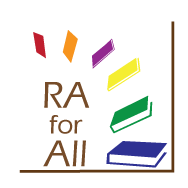As an adult librarian, I do not regularly help children find books to read, mostly because I am not qualified enough to help them properly. However, as a parent myself, and as I help adult patrons, I am often asked about books families can read together.
I have a mental list of suggestion, many of which are fantasy selections or
Newbery winners, but thanks to my husband, I found a better list.
Time Out Chicago published
this list of book pairing matching the book you are reading with a suggestion for you kids. I love how this list does not force an adult to read a kids book. Rather it has some very grown up suggestions (
The Girl Who Kicked the Hornet's Nest
) paired with a more kid friendly book (
Pippi Longstocking
) so that you can share the similarities together but each enjoy a book that is appropriate to you.
I have re-posted the list below for those
too lazy to click through. Even if you do not have kids, this is a quality list of "good reads."
YOU’RE READING Let the Great World Spin
(Random House), Colum McCann’s collection of interwoven short stories that take place in New York City around the time high-wire artist Philippe Petit walked on a cable between the two towers of the World Trade Center in 1974.
YOUR KIDS CAN READ The Man Who Walked Between the Towers 
by Mordicai Gerstein (Roaring Brook Press), a Caldecott Medal–winning picture book that chronicles Petit’s daredevil feat with lyric prose and whimsical illustrations.
YOU’RE READING The Girl Who Kicked the Hornet’s Nest
(Vintage), the final installment of Stieg Larsson’s Swedish thriller trilogy and probably the hottest book anywhere right now.
YOUR KIDS CAN READ Swedish children’s author Astrid Lindgren’s stories about young adventurers Pippi Longstocking and Kalle Blomkvist (Bill Bergson in the English translation), which take place in the same locale. The deceased Larsson was reportedly a big fan of Lindgren and gave his character Blomkvist the mocking nickname Kalle to pay homage to her.
YOU’RE READING The Omnivore’s Dilemma
by Michael Pollan (Penguin), the stomach-turning look up and down the American food chain.
YOUR KIDS CAN READ The Omnivore’s Dilemma for Kids: The Secrets Behind What You Eat 
(Dial), a shortened and simplified young-adult version of the grown-up one that’ll make Junior think twice about that Big Mac.
YOU’RE READING Little Bee: A Novel
by Chris Cleave (Simon & Schuster), about a horrific event that intertwines the fates of a teenage Nigerian orphan and a well-to-do British couple.
YOUR KIDS CAN READ The BFG
by Roald Dahl (Puffin), a literary classic that Cleave chronicled reading to his own kids in his popular Guardian newspaper column, “Down with the Kids.”
YOU’RE READING The Curious Incident of the Dog in the Night-Time
(Vintage Books), Mark Haddon’s strange and sweet mystery written from the point of view of an autistic British boy trying to crack the case of a murdered neighborhood poodle.
YOUR KIDS CAN READ The London Eye Mystery
by Siobhan Dowd (Yearling), a popular young-adult book about a boy with Asperger’s syndrome who solves the mystery of how his cousin disappeared while riding the London Eye.
YOU’RE READING Building Social Business: The New Kind of Capitalism that Serves Society’s Most Pressing Needs
by Nobel Peace Prize recipient and Bangladeshi economist Muhammad Yunus (PublicAffairs), an outline of Yunus’s no-dividend business model that’s being hailed as the solution to today’s financial, food and energy crises.
YOUR KIDS CAN READ Rickshaw Girl
by Mitali Perkins (Charlesbridge Publishing), an upper-elementary read about a young Bangladeshi kid struggling with her family’s financial problems and her place in the family as a girl, who traditionally cannot work or earn money.
YOUR KID IS READING The Lion and the Mouse
(Little, Brown), Aesop’s classic fable illustrated with magnificent, bold drawings by artist Jerry Pinkney.
YOU CAN READ Their Eyes Were Watching God
by Zora Neale Hurston and illustrated by Pickney (University of Illinois) with intricate interpretive drawings by the artist, who turned to the medium because of severe dyslexia.
YOUR KID IS READING The Absolutely True Diary of a Part-time Indian
by Sherman Alexie (Little, Brown), a wildly popular young-adult read about a Native-American teen who leaves his reservation to attend an all-white high school.
YOU CAN READ The Lone Ranger and Tonto Fistfight in Heaven
(Grove Press), a collection of short stories for adults about life on a Spokane Indian reservation that’s also by Alexie, who wrote the screenplay for the film
Smoke Signals. Then borrow the
Absolutely True Diary from your kids. It’s that good.














